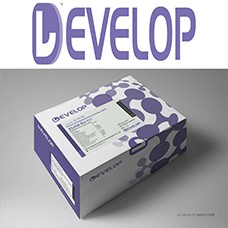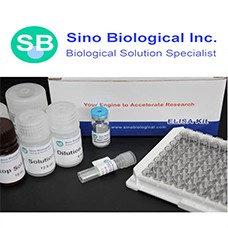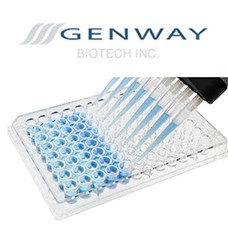×
Login Form
×
rejestracja
informacje o profilach
Daty zarejstrowania
lub Zaloguj się
Macrophage colony-stimulating factor(M-CSF)
Gene Summary: It is a cytokine. The active form of the protein is found extracellularly as a disulfide-linked homodimer, and is thought to be produced by proteolytic cleavage of membrane-bound precursors.[1] Four transcript variants encoding three different isoforms have been found for this gene.
Subunit structure: Homodimer or heterodimer; disulfide-linked. Interacts with CSF1R. {ECO:0000269|PubMed:1531650, ECO:0000269|PubMed:20504948, ECO:0000269|PubMed:3264877, ECO:0000269|PubMed:8422357}.
Subcellular location: Cell membrane {ECO:0000269|PubMed:1531650, ECO:0000269|PubMed:3264877}; Single-pass type I membrane protein {ECO:0000269|PubMed:1531650, ECO:0000269|PubMed:3264877}.; Processed macrophage colony-stimulating factor 1: Secreted, extracellular space.
Post-translational: N- and O-glycosylated. Glycosylation and proteolytic cleavage yield different soluble forms. One high molecular weight soluble form is a proteoglycan containing chondroitin sulfate. O-glycosylated with core 1 or possibly core 8 glycans. Isoform 1 is N- and O-glycosylated. Isoform 3 is only N-glycosylated. {ECO:0000269|PubMed:1531650, ECO:0000269|PubMed:22171320, ECO:0000269|PubMed:23234360, ECO:0000269|PubMed:3264877}.
Involvement in disease: DISEASE: Note=Aberrant expression of CSF1 or CSF1R can promote cancer cell proliferation, invasion and formation of metastases. Overexpression of CSF1 or CSF1R is observed in a significant percentage of breast, ovarian, prostate, and endometrial cancers.; DISEASE: Note=Aberrant expression of CSF1 or CSF1R may play a role in inflammatory diseases, such as rheumatoid arthritis, glomerulonephritis, atherosclerosis, and allograft rejection.
General information above from UniProt and NCBI
Macrophage colony-stimulating factor 1, also known as CSF-1, M-CSF, Lanimostim and CSF1, is a single-pass membrane protein which is disulfide-linked as a homodimer or heterodimer. Granulocyte / macrophage colony-stimulating factors are cytokines that act in hematopoiesis by controlling the production, differentiation, and function of 2 related white cell populations of the blood, the granulocytes and the monocytes-macrophages. M-CSF/CSF-1 is known to facilitate monocyte survival, monocyte-to-macrophage conversion, and macrophage proliferation. M-CSF/CSF-1 is a secreted cytokine which influences hemopoietic stem cells to differentiate into macrophages or other related cell types. It binds to the Colony stimulating factor 1 receptor. M-CSF/CSF-1 may also be involved in development of the placenta. The active form of M-CSF/CSF-1 is found extracellularly as a disulfide-linked homodimer, and is thought to be produced by proteolytic cleavage of membrane-bound precursors. M-CSF/CSF-1 induces cells of the monocyte/macrophage lineage. It also plays a role in immunological defenses, bone metabolism, lipoproteins clearance, fertility and pregnancy. Upregulation of M-CSF/CSF-1 in the infarcted myocardium may have an active role in healing not only through its effects on cells of monocyte/macrophage lineage, but also by regulating endothelial cell chemokine expression.
M-CSF relevant products:
Use the filter on the right or the search box below to find your product.
-
Human Colony Stimulating Factor 1, Macrophage (MCSF) ELISA Kit - DL-MCSF-Hu
Sensitivity: 6.5pg/mLDowiedz się więcej
Detection: 15.625-1000pg/mL -
Human CSF1R / MCSF Receptor / CD115 ELISA Kit
Sensitivity: 11.2 pg/mlDowiedz się więcej
Detection: 46.88-3000 pg/mlProduct Code: KIT10161-1 -
Product Code: GWB-DDZ064
-
Product Code: GWB-SKR151
-
Product Code: GWB-SKR152
-
Mouse Colony Stimulating Factor 1, Macrophage (MCSF) ELISA Kit - DL-MCSF-Mu
Sensitivity: 6.4pg/mLDowiedz się więcej
Detection: 15.625-1000pg/mL -
Product Code: GWB-ZZD125
-
Product Code: GWB-SKR093
-
Rat Colony Stimulating Factor 1, Macrophage (MCSF) ELISA Kit - DL-MCSF-Ra
Sensitivity: 5.9pg/mLDowiedz się więcej
Detection: 15.625-1000pg/mL





